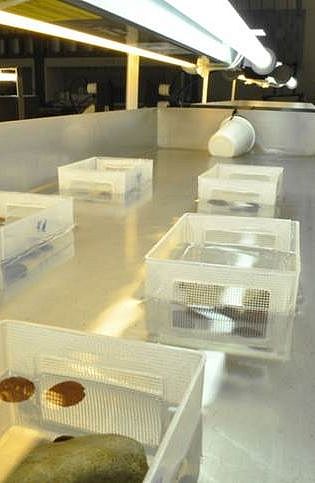Laboratory experiments
1. The significance of the water temperature to explain "Crenobiosis"
In the past to explain the term "Crenobiosis" - the close binding of species to the habitat spring - mostly the constant cool water temperatures in springs were used. But both field as well as laboratory observations indicate that the water temperature should not be given such significance. In laboratory experiments with crenobiont species we plan to gather a robust data base to gain more insight in this question.
2. Effects of pesticides on the metabolism of the amphipod crustacean Gammarus fossarum
As a very abundant and relatively robust organism in springs and headwaters G. fossarum is very well suited for laboratury experiments. While earlier experiments in the research group have shown that G. fossarum is sensible to atrazine and copper sulfate, we now focus on the effect of glyphosate. Furthermore we examine the effects of ozonization and activated carbon treatment - which are being introduced in the forth cleaing stage in the big ARAs (sewage treatment plants).

Quick Links
Social Media
